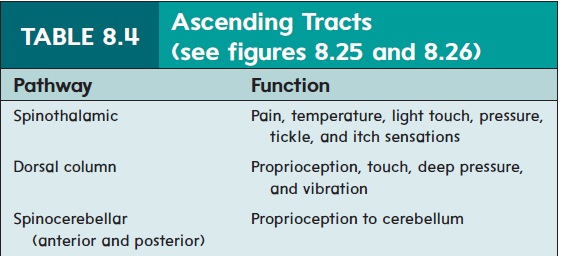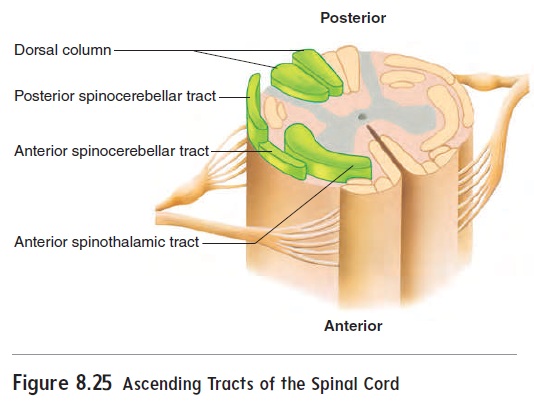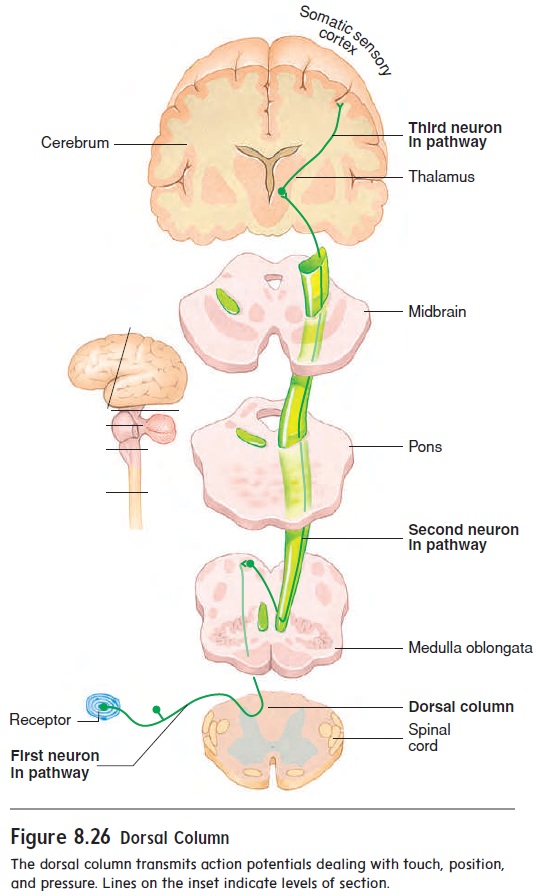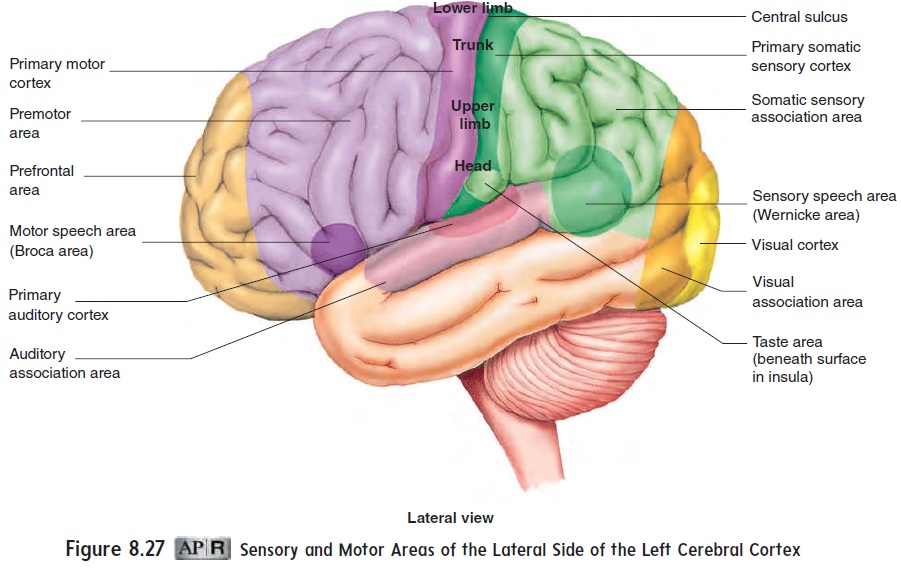Chapter: Essentials of Anatomy and Physiology: Nervous System
Sensory Functions
SENSORY FUNCTIONS
The CNS constantly receives a variety of stimuli originating both inside and outside the body. We are unaware of a large part of this sensory input, but it is vital to our survival and normal functions. Sensory input to the brainstem and diencephalon helps maintain homeostasis. Input to the cerebrum and cerebellum keeps us informed about our environment and allows the CNS to control motor functions. A small portion of the sensory input results in perception, the conscious awareness of stimuli .
Ascending Tracts
The spinal cord and brainstem contain a number of ascending (sensory) tracts, or pathways, that transmit information via action potentials from the periphery to various parts of the brain (table 8.4 and figure 8.25). Each tract is involved with a limited type of sensory input, such as pain, temperature, touch, position, or pressure, because each tract contains axons from specific sen-sory receptors specialized to detect a particular type of stimulus .

Tracts are usually given composite names that indicate their origin and termination. The names of ascending tracts usually begin with the prefix spino-, indicating that they begin in the spi-nal cord. For example, the spinothalamic tract begins in the spinal cord and terminates in the thalamus.

Most ascending tracts consist of two or three neurons in sequence, from the periphery to the brain. Almost all neurons relaying information to the cerebrum terminate in the thalamus. Another neuron then relays the information from the thalamus to the
The spinothalamic tract, which transmits action potentials dealing with pain and temperature to the thalamus and on to the cerebral cortex, is an example of an ascending tract.The dorsal column, which transmits action potentials dealing with touch, position, and pressure, is another example (figure 8.26).

Sensory tracts typically cross from one side of the body in the spinal cord or brainstem to the other side of the body. Thus, the left side of the brain receives sensory input from the right side of the body, and vice versa.
Ascending tracts also terminate in the brainstem or cerebel-lum. The anterior and posterior spinocerebellar tracts, for exam-ple, transmit information about body position to the cerebellum (see “Cerebellum”).
Sensory Areas Of The Cerebral Cortex
Figure 8.27 depicts a lateral view of the left cerebral cortex with some of the sensory and motor areas indicated. The terms area and cortex are often used interchangeably for these regions of the cerebral cortex. Ascending tracts project to specific regions of the cerebral cortex, called primary sensory areas, where sensations are perceived. The primary somatic sensory cortex, or generalsensory area, is located in the parietal lobe posterior to the cen-tral sulcus. Sensory fibers carrying general sensory input, such as pain, pressure, and temperature, synapse in the thalamus, and thalamic neurons relay the information to the primary somatic

the dorsal column transmits action potentials dealing with touch, position, and pressure. Lines on the inset indicate levels of section.sensory cortex. Sensory fibers from specific parts of the body project to specific regions of the primary somatic sensory cortex so that a topographic map of the body, with the head most inferior, exists in this part of the cerebral cortex (figure 8.27). Other pri-mary sensory areas include the visual cortex in the occipital lobe, the primary auditory cortex in the temporal lobe, and the taste area in the insula.
Cortical areas immediately adjacent to the primary sensory areas, called association areas, are involved in the process of recognition. For example, sensory action potentials originating in the retina of the eye reach the visual cortex, where the image is perceived. Action potentials then pass from the visual cortex to the visual association area, where the present visual information is compared to past visual experience (“Have I seen this before?”). On the basis of this comparison, the visual association area “decides” whether the visual input is recognized and judges whether the input is significant.
For example, if you pass a man walking down a street, you usually pay less attention to him if you’ve never seen him before than if you know him, unless a unique characteristic of the unknown person draws your attention. Other examples of association areas are the auditory association area, adjacent to the primary auditory cortex, and the somatic sensory association area, adjacent to the primary somatic sensory cortex.
Related Topics